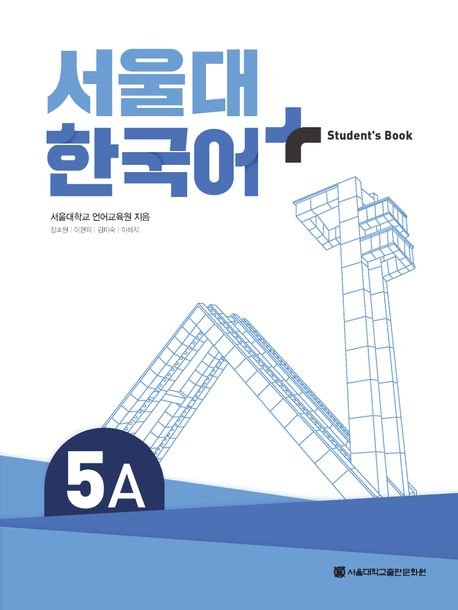Lectures on Korean FTA and Law
ISBN 9791159013966
Language English
N. of Pages 223쪽
Size/Weight 153 * 222 * 25 mm / 342 g
Author/Editor Bongchul Kim , Ho Kim
Publisher 한국외국어대학교 지식출판콘테츠원
Date of Publication 2018년 10월 10일
Country of Origin Korea
ISBN 9791159013966
Language English
N. of Pages 223쪽
Size/Weight 153 * 222 * 25 mm / 342 g
Author/Editor Bongchul Kim , Ho Kim
Publisher 한국외국어대학교 지식출판콘테츠원
Date of Publication 2018년 10월 10일
Country of Origin Korea
ISBN 9791159013966
Language English
N. of Pages 223쪽
Size/Weight 153 * 222 * 25 mm / 342 g
Author/Editor Bongchul Kim , Ho Kim
Publisher 한국외국어대학교 지식출판콘테츠원
Date of Publication 2018년 10월 10일
Country of Origin Korea
<KR>
About the book
LECTURES ON KOREAN FTA
Korea has joined many types of multilateral international agreements and also have made several Free Trade Agreements(FTAs) with its major economic partners. Hypothetically, the Korean government believed that FTAs may be seen as an effective measure to seek and respond actively to the trend of Preferentialism in the late 1990s. Since then, the government has continued to promote its FTA policy and have improved in the related laws.
<ENG>
책 소개
한국 FTA 강의
한국은 다양한 유형의 다자간 국제 협정에 가입하고 주요 경제 파트너들과 여러 차례 자유무역협정(FTA)을 체결했습니다. 가설적으로 한국 정부는 FTA가 1990년대 후반 특혜주의 추세에 적극적으로 대응하고 모색하는 효과적인 조치로 볼 수 있다고 판단했습니다. 이후 정부는 FTA 정책을 지속적으로 추진하고 관련 법률을 개선해 왔습니다.
<FR>
À propos du livre
CONFÉRENCES SUR L'ALE CORÉE
La Corée a adhéré à de nombreux types d'accords internationaux multilatéraux et a également conclu plusieurs accords de libre-échange (ALE) avec ses principaux partenaires économiques. Hypothétiquement, le gouvernement coréen croyait que les ALE pourraient être considérés comme une mesure efficace pour rechercher et réagir activement à la tendance du préférentialisme à la fin des années 90. Depuis lors, le gouvernement a continué de promouvoir sa politique d'ALE et s'est amélioré dans les lois connexes.
Table of Contents
Preface ㆍ 5
Lecture 1. The Basic concepts concerning Multilateralism 1 ㆍ 17
1. GATT system ㆍ 19
2. WTO System ㆍ 25
Lecture 2. The Basic concepts concerning Multilateralism 2 ㆍ 35
1. The WTO Dispute Settlement Mechanism ㆍ 37
2. WTO Agreements as Multilateral Trade Agreements ㆍ 41
Lecture 3. Regional Trade Agreements and Preferential Trade Agreements 1 ㆍ 43
1. Regionalism, Regional Trade Agreements and Preferential Trade Agreements ㆍ 45
2. The Motivations for RTAs or PTAs ㆍ 51
Lecture 8. RTA Cases in WTO Dispute Settlement System 2 ㆍ 117
1. Three Safeguards cases involving the United States- the principle of ‘Parallelism’ ㆍ 119
2. Two cases on Domestic regulations under RTAs ㆍ 123
3. A Recent case regarding RTA-related objection at WTO proceedings ㆍ 127
Lecture 9. RTAs of China ㆍ 131
1. Overview of the RTAs of China ㆍ 133
2. Asia-Pacific Trade Agreement (Bangkok Agreement), China-ASEAN FTA and China-Hong Kong/Macao CEPAs ㆍ 136
3. Chinese FTAs with Chile, Pakistan and others ㆍ 142
Lecture 10. RTAs of Japan ㆍ 149
1. Overview of the RTAs of Japan ㆍ 151
2. EPAs with Singapore, Mexico and Chile ㆍ 155
3. EPAs with Malaysia, ASEAN and the TPP Project ㆍ 160
Lecture 11. RTAs of Korea and the Northeast Asian RTA 1 ㆍ 165
1. Overview of the RTAs of Korea ㆍ 167
2. FTAs with Chile, Singapore and EFTA ㆍ 169
Lecture 12. RTAs of Korea and the Northeast Asian RTA 2 ㆍ 179
1. FTAs with ASEAN and the US ㆍ 181
2. Vision for the CJK FTA in Northeast Asia ㆍ 187
Lecture 13. Inter-Korean Exchange and FTA (the KIC) ㆍ 193
1. The Kaesong Industrial Complex ㆍ 195
2. The Main Frame of the KIC Project ㆍ 197
3. Changes in the Political Environment of the KIC ㆍ 198
4. Laws on the KIC ㆍ 202
5. Concluding Remarks ㆍ 211
Lecture 14. The new Function of the Korean FTAs ㆍ 215
1. The Korea-China FTA: A Stepping Stone for the Trilateral FTA?
ㆍ 217
2. Special treatment to the KIC product ㆍ 219
3. For the Human Rights or the Development issues? ㆍ 221
Into the book
ㆍ The Background of the Modern International Trade and Law
The Bretton Woods Conference of 1944 recognized the need for an international institution to regulate international trade as part of a larger plan for economic recovery aer World War II. Following World War II, nations throughout the world, led by the US and several other developed countries, sought to establish an open and non-discriminatory trading system with the goal of raising the economic well-being of all countries. Being aware of the role of trade barriers in contributing to the economic
depression during the 1930s, and the military aggression that rose following the depression, the countries that met to discuss the new trading system saw open trade as essential for economic stability and peace.
Then, the US proposed to enter into negotiations for an International Trade Organization (ITO) in 1945. e intent of the negotiators was to establish the ITO, which would address not only trade barriers but also other issues related to trade, including employment, investment, restrictive business practices, and commodity agreements. The Charter for the establishment of the ITO (the Havana Charter) set out the basic rules for international trade and economic matters. Under the Charter, the ITO was to be a United Nations specialized agency. e negotiations on the ITO Charter were completed in Havana in 1948. The negotiations on the General Agreement on Tariffs and Trade(GATT) also advanced well and the GATT was signed in 1947.
However, the ITO treaty was not approved by the US and a few other signatories and never went into eect. Instead, a provisional agreement on tariffs and trade rules (in other words, the GATT) was reached and went into eect in 1948. Countries had to try to handle the trade problems under the GATT 1947 without the ITO. This provisional GATT became the principal set of rules governing international trade for the next 47 years. Although it was not an organization, the GATT gradually became the focus for international governmental cooperation on trade matters. Therefore, the GATT system was the outcome of the failure of the ITO.












































